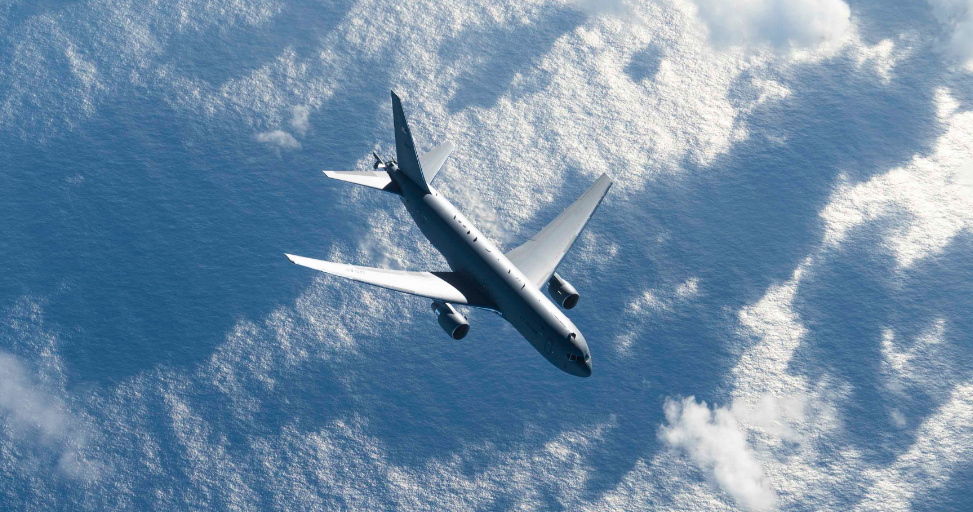
KC-46
The U.S. Air Force wants an innovative aerial refueling system that can operate more effectively in contested environments, with a goal of operations beginning in 2040.
The service on Jan. 31 released a request for information (RFI) for what it is now calling the Next Generation Aerial Refueling System (NGAS)—the third stage of tanker modernization that was previously known as “KC-Z.” The RFI says NGAS will follow the first increment, the ongoing fielding of the Boeing KC-46, and the follow-on KC-Y or “bridge tanker”—a sign that the Air Force for now will continue with that program.
The document says the Air Force wants to begin analysis-of-alternatives work on NGAS in October 2023.
“The team is seeking information on innovative industry solutions that might fulfill the most stressing and complex air refueling mission requirements of the future fight,” the RFI says.
While the Air Force wants the future tanker to be able to operate in a contested environment against a high-end threat, it does not specifically call for technologies that have long been assumed to be needed, such as autonomy and stealth characteristics.
“The [Air Force] is interested in innovative solutions in all size and performance classes that might address the stressing mission requirements; airspeeds should be compatible with modern receivers,” the document says.
The Air Force wants responding companies to outline the size and weight of their offerings, along with takeoff, landing, climb and cruise mission performance. It also wants details on fuel offload and range and considerations for access to smaller airfields, such as regional or improvised airstrips.
While the KC-46 and potential KC-Y aircraft are largely similar to how the service has traditionally operated the aerial refueling mission, the Air Force wants competitors to think big.
“How does your solution change the way aerial refueling operations would be executed?” the service asks. “What operational or support changes do you believe are critical to increase aerial refueling capabilities in a future fight?”
While the service wants new technologies, it warns competitors to be realistic. It asks respondents to outline what critical technologies are essential for a viable NGAS concept, and while concepts of varying risk level may by submitted, they have to be available by 2032, the document says.
Companies have until March 2 to respond.
The RFI is the latest in a series of steps the Air Force has taken to accelerate its future refueling plans. On Dec. 31, 2022, the service released a sources-sought notice for what it called a “Cross-Cutting Operational Enabler.” This will inform the service’s upcoming five-year budget plan, with an expected deadline of March 2023 to provide recommendations for Air Force Secretary Frank Kendall.
“One of the things we’re doing this year is to take a look at the whole mobility equation,” Kendall told Aerospace DAILY in December. “One of the problems we’re confronting is the threat keeps trying to reach out to farther range to engage us. Now they’re out at ranges where we’ve got to worry about the survivability of tankers and transport aircraft … so we’re looking at that problem arc now, and we’re very wide-open aperture.”
That sources-sought notice outlined characteristics the Air Force wants, including resilient line-of-sight and beyond-line-of-sight connectivity with open architecture designs and multiple options for position, navigation and timing. The tankers need increased situational awareness, with onboard electronic warfare systems.
